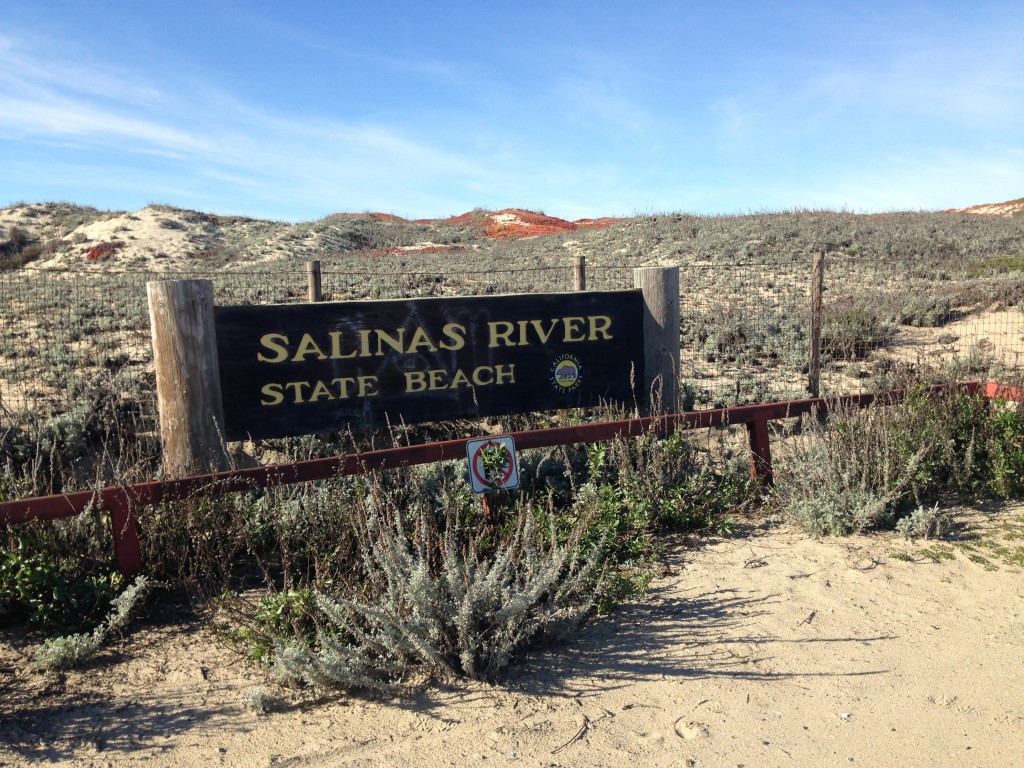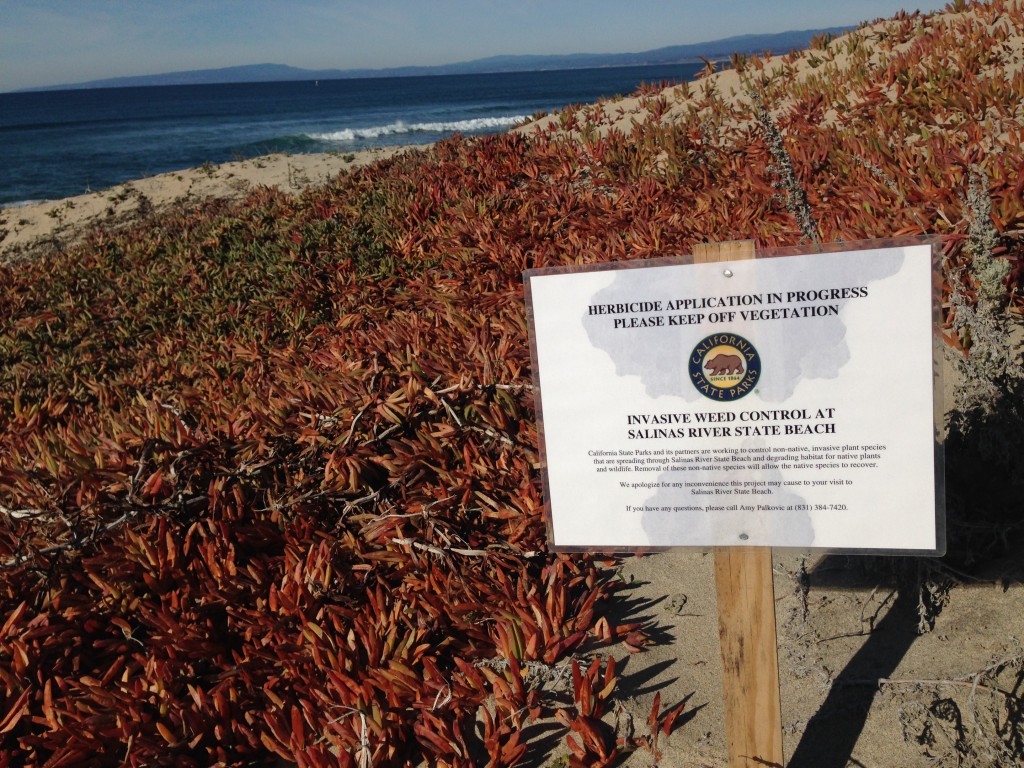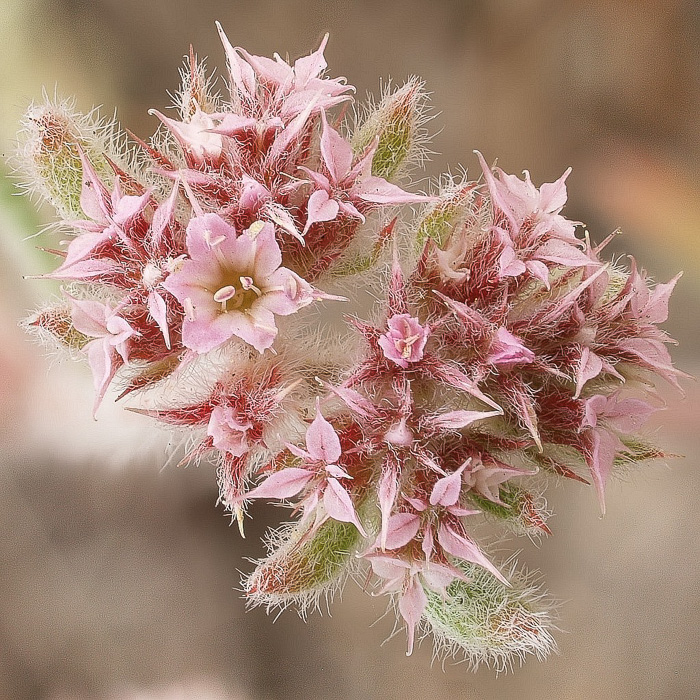Coastal Dune Restoration to Combat Sea Level Rise
ECI is working with several partners to restore (eradicate invasive iceplant and reestablish native plants) twenty acres of sensitive dune habitat within Salinas River State Beach (SRSB). The twenty acres were carefully selected because of recent studies that show coastal vulnerabilities to Sea Level Rise. These studies have found that the adaptive capacity of natural ecosystems can protect coastal areas from those vulnerabilities. Other studies suggest that the removal of iceplant and reestablishment of native plants will enable dune habitats to better respond to wave impacts, which will enable them to be more resilient to more frequent and more damaging storms (De Lillis et al. 2004).
The iceplant eradication is primarily through the use of hand spraying herbicide and hand pulling of iceplant. Iceplant is an extremely invasive species that has choked thousands of acres of dune systems along the California Coast. A recent analysis of aerial imagery of SRSB revealed that iceplant cover ranges from 35% to 65% with an average of 48% across the foredune community.
In SRSB, there are 280 acres of rare coastal dune and coastal marsh habitats. The dunes extend inland in some places for over 1000 feet and are 50–60 feet above sea level at their highest points. They are home to many species of wildlife and migratory birds.
The three plant communities at SRSB are foredune, coastal scrub and dune pond. Several special status plants and plant communities are occurring here, including Menzies’ wallflower (Erysimum menziessii ssp. menziesii), Monterey gilia (Gilia tenuiflora ssp. arenaria), Monterey spineflower (Chorizanthe pungens var. pungens), and sand-loving wallflower (Erysimum ammophilum), as well as central dune scrub and northern coastal salt marsh communities.
Vegetation in the foredune and coastal dune scrub communities provide food, cover, and nesting sites for many species of insects, birds, amphibians, reptiles and mammals. Velvet ants, ground-nesting wasps and bees, scarab and dune beetles and many other insects live in the dunes. Harriers and songbirds may forage on the plants and animals found in the dune scrub plant community. Amphibians and reptiles include the Pacific tree frog (Pseudacris regilla), Coast garter snake (Thamnophis elegans terrestris), and the northern alligator lizard (Elgaria coerulea). Mammals such as coyotes (Canis latrans), raccoons (Procyon lotor), feral cats (Felis catus) and non-native red foxes (Vulpes vulpes) may hunt birds and smaller mammals in the dune habitat.
The eradication phase will be complete after spring 2017 with a second round of removal scheduled for fall 2017. There is also seed collection from the local dune communities for future planting and seed broadcast. After planting and seed broadcasting, there will be ongoing maintenance and monitoring to ensure success. The findings of this project will be published as a Dune Restoration Best Practices Guide for future efforts.
Project Goals:
- Eradicate Iceplant from Fore and Mid Dunes
- Establish Diverse Native Plant Composition in SRSB Dunes
- Enhance Storm Reslience of Dune Systems
- Support California State Parks Dune Management Efforts





